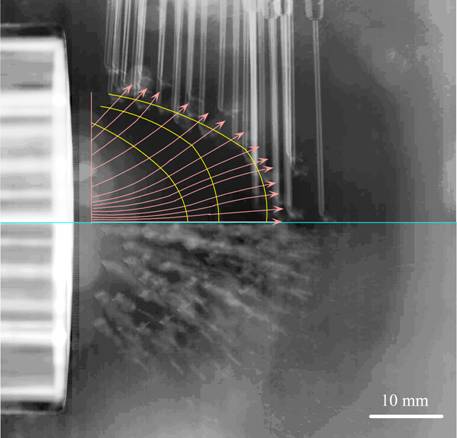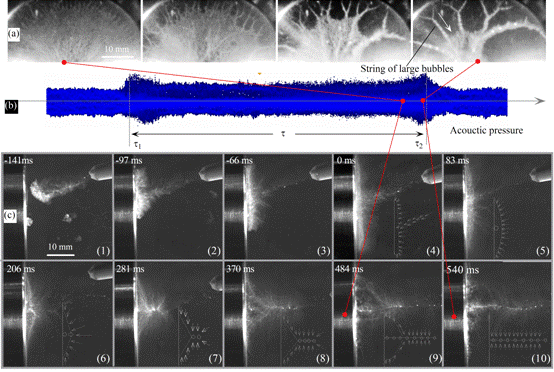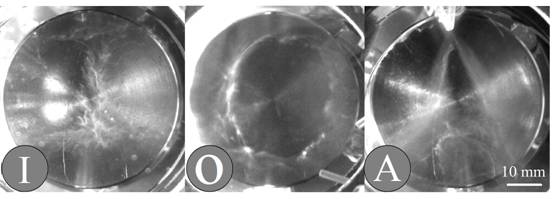Ultrasonic cavitation field in liquid provides a unique environment for chemical reactions and has many applications. Each bubble in the cavitation field acts as a single sonochemical reactor in itself. However, cavitation bubble distribution is spatially inhomogeneous. They can form different structures in the ultrasound field. In order to increase the efficiency of sonochemical reactors, it is necessary to study cavitation bubble structure of increasing the spatial density of bubbles and controlling the position and structure of bubble cloud.
As a result, BAI Lixin, DENG Jingjun, LI Chao and XU Delong from the Institute of Acoustics, Chinese Academy of Sciences present a method to produce high-density controllable bubble structures in the vicinity of radiating surface by artificially implanting nuclei. These high-density cavitation structures can be produced at relatively low acoustic radiation intensity. And it will improve the performance of sonochemical reactors. They also found that this kind of cavitation can be well controlled. In addition, letters could even be formed with these cavitation bubbles. The controllability of cavitation bubble cluster may be used in the other industrial units.

Fig. 1. The tailing zone in the vicinity of radiating surface(Image by BAI).

Fig. 2. Tailing bubble structure (Image by BAI).

Fig. 3. Artificial cone-like bubble structure (ACBS). (a) The process of bubble layer evolution (front view). (b) The pressure-time history during the evolution of bubble cluster. (c) The process of ACBS formation and evolution (side view). The small figures at the bottom right corner show the shape of ACBS and the direction of bubble motion(Image by BAI).

Fig. 4. Cavitation bubble letters in a tailing zone (Image by BAI).
This research was supported by the National Natural Science Foundation of China (Nos. 11174315, 51179114) and the National Science and Technology Major Project of China (No. 2011ZX05032-003).
The research result was published online http://dx.doi.org/10.1016/j.ultsonch.2013.07.011 (Available online 26 July 2013) and on a state of corrected proof in Ultrasonics Sonochemistry.
Contact:
BAI Lixin
Institute of Acoustics, Chinese Academy of Sciences
blx@mail.ioa.ac.cn






